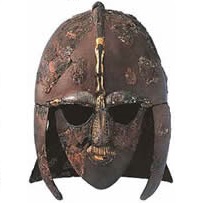
- Quick Guide:
- Verbs with a change from a to ä
- Verbs with a change from e to i or ie
- Stem-changing verbs in Old English
- Exercises and Activities
In German some verbs have a stem-vowel change in the present tense, more specifically in the du and the er/sie/es-forms. For now, the guide will just give the basic premise of the stem-vowel changing verbs, but you will learn later on that these verbs have further implications concerning different forms and tenses.
There are two basic types of vowel change, based on the vowel that occurs in the infinitive.
a → ä
e → i or ie
Note that there is one more type of stem-vowel change (o to ö), but only one base verb has this change (stoßen "to strike": er stößt).
Verbs with a change from a to ä
The first type of vowel change, a to ä, includes the change from au to äu; one such verb in this category is laufen: er läuft.
| Singular | Form | Plural | Form |
|---|---|---|---|
| ich | schlafe | wir | schlafen |
| du | schläfst | ihr | schlaft |
| er/sie/es | schläft | sie (pl.), Sie | schlafen |
| Singular | Form | Plural | Form |
|---|---|---|---|
| ich | laufe | wir | laufen |
| du | läufst | ihr | lauft |
| er/sie/es | läuft | sie (pl.), Sie | laufen |
Verbs with a change from e to i or ie
The second type of change, however, is a bit more complicated in that the change cannot be predicted based on any criteria; the change simply has to be memorized on a case-by-case basis.
| Singular | Form | Plural | Form |
|---|---|---|---|
| ich | lese | wir | lesen |
| du | liest | ihr | lest |
| er/sie/es | liest | sie (pl.), Sie | lesen |
| Singular | Form | Plural | Form |
|---|---|---|---|
| ich | esse | wir | essen |
| du | isst | ihr | esst |
| er/sie/es | isst | sie (pl.), Sie | essen |
Stem-changing verbs in Old English
How, then, does Old English even fit into the pattern? Old English, unlike Modern English, had these types of verbs and, moreover, the two basic changes found in German are also found in Old English.
a → æ
The "æ" is the vowel sound in "cat" and is similar phonetically to the German ä.
In the following charts only the third person singular present tense form is given to illustrate the vowel change. The second person singular present tense form simply has the ending st in place of the German t or the Old English þ.
| English | Old English infinitive |
Old English hē... |
German infinitive |
German er... |
|---|---|---|---|---|
| "bake" | bacan | bæcþ | backen | bäckt1 |
| "go" | faran | færþ | fahren | fährt |
| "load" | hladan | *hlædþ2 | laden | lädt |
| "shake" | scacan | scæcþ | -3 | -3 |
1The form backt, without the stem change, is also possible.
2This form is not recorded anywhere. The form that occurs is hladeþ, strikingly with no vowel change (Mitchell and Robinson 157, footnote 3).
3There is no known cognate in German.
e → i or ie
The second major type of vowel change in Old English is like its German counterpart in that it cannot be predicted but has to be memorized.
| English | Old English infinitive |
Old English hē... |
German infinitive |
German er... |
|---|---|---|---|---|
| "help" | helpan | hilpþ | helfen | hilft |
| "bear" | beran | birþ | (gebären) | (gebirt) |
| "break" | brecan | bricþ | brechen | bricht |
| "steal" | stelan | stilþ | stehlen | stiehlt |
| "eat" | etan | itt, iteþ4 | essen | isst |
| "speak" | sprecan | spricþ | sprechen | spricht |
| "throw" | weorpan | wierpþ | werfen | wirft |
| "become" | weorþan | wierþ | werden | wird |
| "see" | sēon | siehþ | sehen | sieht |
4The first form is the regular form, with þ absorbed into the preceding t for ease of pronunciation. The second form has also been recorded but is less frequent.
(Old English forms from Mitchell and Robinson 152-158)
Exercises and Activities
(Exercises open in a new window)Stem-vowel Changes in Old English and Modern High German (1)
Stem-vowel Changes in Old English and Modern High German (2)
Present Tense Stem Changes
Previous: Present Tense || Next: Present Perfect
![]()
![]()